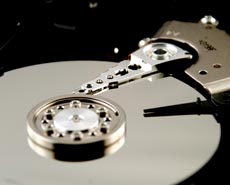Is the era of magnetic storage is coming to an end? Those of a certain age will remember a time when cassette tapes were used to store data – please do not raise your hands, we see the gray hair and we know who you are. Those of a slightly less certain age will remember 5.25-inch floppies. 3.5-inch floppies live on in noble spirit as the “save” icon for a host of applications. Hard drives have ruled the consumer memory roost for over a decade… but it will soon be time to bid them a fond farewell also. Thanks to falling prices, rising capacity, and numerous other advantages, the solid-state drive (SSD) is here to stay. Solid-state drives are not new, but price has previously kept them beyond the reach of consumer electronics technology. The format originated in the ’50s and matured through use in the supercomputers of the ’70s and ’80s. SSDs use integrated circuit assemblies to store data. There are no moving parts, and they retain their data even without electrical power. Memory capacity is steadily increasing, which has made possible the format’s debut into the consumer market. Today, affordability is driving the switch for mainstream users. By the end of the year prices for SSDs in the most popular PCs could fall to around $1 per gigabyte, a level which is seen as the tipping point that pushes consumers through the door en masse – at that price, they are no longer faced with the unpalatable choice of supplementing their $800 computer with a SSD that costs almost half as much. With the price barrier removed, the advantages of SSD memory over rival formats are almost irresistible: faster transfer rates instant boot lesser power requirement much improved resistance to shock &...

